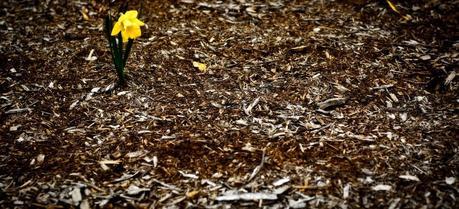 Enzyme breaks down plant stems, wood chips, cardboard waste and shells, helps make biofuel. (Credit: Flickr @ David Goehring https://www.flickr.com/photos/carbonnyc/)
Enzyme breaks down plant stems, wood chips, cardboard waste and shells, helps make biofuel. (Credit: Flickr @ David Goehring https://www.flickr.com/photos/carbonnyc/)Scientists at the University of York are playing a key role in the quest for a better understanding of how a recently discovered family of enzymes can degrade hard-to-digest biomass into its constituent sugars.
The enzymes—lytic polysaccharide monooxygenases (LPMOs)—are secreted by both fungi and bacteria and have the ability to “chip away” at cellulose and other intractable materials. This allows cellulosic materials such as plant stems, wood chips and cardboard waste, as well as other tricky polysaccharides such as insect/crustacean shells, to be broken down.
SEE ALSO: Two Enzymes Are Better Than One, Study Finds
Finding a way of breaking down cellulosic materials into their constituent sugars to allow them to be fermented through to bioethanol is a key aim for second-generation biofuel development.
In a recent article in the Proceedings of the National Academy of Sciences (see footnote), an international team of researchers, including Professor Paul Walton and Professor Gideon Davies from York, provided important new information on how LPMOs work.
The team—which included scientists from the United States, Denmark and the UK—carried out a detailed investigation of how the enzymes use oxygen from the air to create a very reactive entity. This oxygen species then chips away at cellulose, allowing the difficult-to-degrade biomass to be broken down.
The on-going York research into LPMOs, which is led by Professor Walton and Professor Davies from the Department of Chemistry, is part of Critical Enzymes for Sustainable Biofuels from Cellulose (CESBIC), a collaborative project funded by the European Research Area Industrial Biotechnology network (ERA-IB).
Professor Walton said: “The ability to ferment cellulose is important as it opens up new possibilities in the production of bioethanol from sustainable sources. Through our collaborative research we are starting to uncover exactly the details of how LPMOs work.”
The recent research published in the PNAS article, builds on work reported earlier this year in Nature Chemical Biology (see footnote), which was led by York, and involved Professor Bernard Henrissat, of CNRS, Aix-Marseille Université, Marseille, France. The Nature Chemical Biology article reported on the discovery of an important new family of LPMO able to break down hard-to-digest biomass. This work is funded by the Biotechnology and Biosciences Research Council (BBSRC).
Professor Davies said: “To begin fermenting materials such as wood chips or plant stems, there needs to be a way of breaking into it. The action of an LPMO makes a scratch on the biomass surface which provides an entry point for other enzymes. Understanding how LPMOs work will aid the quest for second generation biofuel production.”
The most recent research reported in PNAS was led by Stanford University. As well as York, it involved Novozymes, Denmark and the University of Hull.
Kjaergaard, C., Qayyum, M., Wong, S., Xu, F., Hemsworth, G., Walton, D., Young, N., Davies, G., Walton, P., Johansen, K., Hodgson, K., Hedman, B., & Solomon, E. (2014). Spectroscopic and computational insight into the activation of O2 by the mononuclear Cu center in polysaccharide monooxygenases Proceedings of the National Academy of Sciences DOI: 10.1073/pnas.1408115111Hemsworth, G., Henrissat, B., Davies, G., & Walton, P. (2013). Discovery and characterization of a new family of lytic polysaccharide monooxygenases Nature Chemical Biology, 10 (2), 122-126 DOI: 10.1038/nchembio.1417
